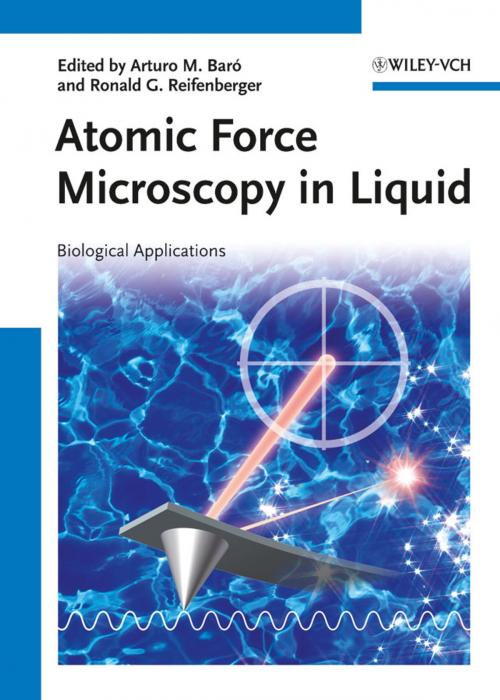Atomic Force Microscopy in Liquid
Biological Applications
Nonfiction, Science & Nature, Science, Other Sciences, Microscopes & Microscopy| Author: | ISBN: | 9783527649822 | |
| Publisher: | Wiley | Publication: | August 1, 2012 |
| Imprint: | Wiley-VCH | Language: | English |
| Author: | |
| ISBN: | 9783527649822 |
| Publisher: | Wiley |
| Publication: | August 1, 2012 |
| Imprint: | Wiley-VCH |
| Language: | English |
About 40 % of current atomic force microscopy (AFM) research is performed in liquids, making liquid-based AFM a rapidly growing and
important tool for the study of biological materials. This book focuses on the underlying principles and experimental aspects of AFM under
liquid, with an easy-to-follow organization intended for new AFM scientists. The book also serves as an up-to-date review of new AFM techniques developed especially for biological samples.
Aimed at physicists, materials scientists, biologists, analytical chemists, and medicinal chemists. An ideal reference book for libraries.
From the contents:
Part I: General Atomic Force Microscopy
* AFM: Basic Concepts
* Carbon Nanotube Tips in Atomic Force Microscopy with
* Applications to Imaging in Liquid
* Force Spectroscopy
* Atomic Force Microscopy in Liquid
* Fundamentals of AFM Cantilever Dynamics in Liquid
* Environments
* Single-Molecule Force Spectroscopy
* High-Speed AFM for Observing Dynamic Processes in Liquid
* Integration of AFM with Optical Microscopy Techniques
Part II: Biological Applications
* DNA and Protein-DNA Complexes
* Single-Molecule Force Microscopy of Cellular Sensors
* AFM-Based Single-Cell Force Spectroscopy
* Nano-Surgical Manipulation of Living Cells with the AFM
About 40 % of current atomic force microscopy (AFM) research is performed in liquids, making liquid-based AFM a rapidly growing and
important tool for the study of biological materials. This book focuses on the underlying principles and experimental aspects of AFM under
liquid, with an easy-to-follow organization intended for new AFM scientists. The book also serves as an up-to-date review of new AFM techniques developed especially for biological samples.
Aimed at physicists, materials scientists, biologists, analytical chemists, and medicinal chemists. An ideal reference book for libraries.
From the contents:
Part I: General Atomic Force Microscopy
* AFM: Basic Concepts
* Carbon Nanotube Tips in Atomic Force Microscopy with
* Applications to Imaging in Liquid
* Force Spectroscopy
* Atomic Force Microscopy in Liquid
* Fundamentals of AFM Cantilever Dynamics in Liquid
* Environments
* Single-Molecule Force Spectroscopy
* High-Speed AFM for Observing Dynamic Processes in Liquid
* Integration of AFM with Optical Microscopy Techniques
Part II: Biological Applications
* DNA and Protein-DNA Complexes
* Single-Molecule Force Microscopy of Cellular Sensors
* AFM-Based Single-Cell Force Spectroscopy
* Nano-Surgical Manipulation of Living Cells with the AFM















